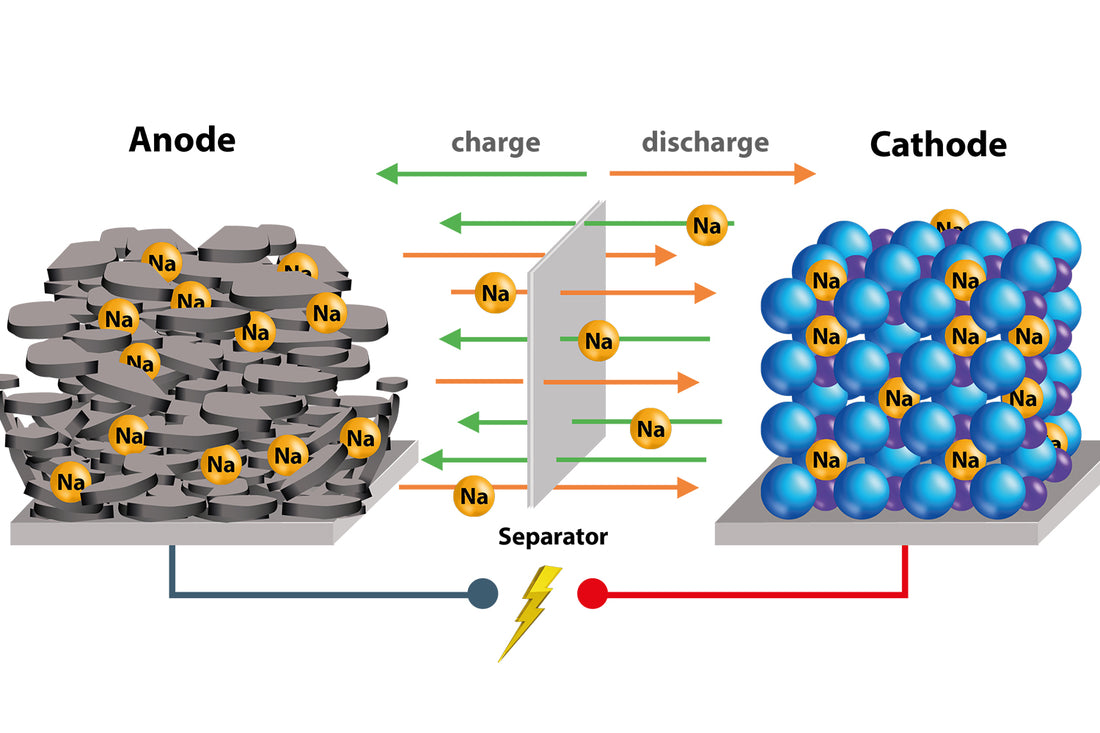Sodium-ion batteries (SIBs) are a promising alternative to lithium-ion batteries (LIBs) due to the abundance and low cost of sodium resources. Over the years, researchers have made significant progress in developing SIBs with improved performance, safety, and stability. In this article, we will discuss the latest trends and developments in the field of SIBs.
1. High Energy Density
One of the main goals in the development of SIBs is to achieve high energy density, which is essential for their use in electric vehicles and other high-power applications. Currently, the energy density of SIBs is lower than that of LIBs. However, recent research has shown that it is possible to improve the energy density of SIBs by using new materials for the anode and cathode.
For instance, researchers have developed a new type of anode material known as hard carbon, which has a high capacity and long cycle life. The use of hard carbon anodes has led to an increase in the energy density of SIBs to around 150 Wh/kg, which is comparable to that of some LIBs.
2. Safety and Stability
Safety and stability are crucial factors to consider when developing SIBs. Sodium is a highly reactive metal that can cause fires or explosions if not handled properly. Therefore, researchers are exploring new materials and designs that can improve the safety and stability of SIBs.
One approach is to use solid-state electrolytes instead of liquid electrolytes, which are more prone to leakage and short-circuiting. Solid-state electrolytes can also improve the stability and lifespan of SIBs by preventing the growth of dendrites, which are finger-like structures that can form on the anode and cause short circuits.
3. Scalability
Another important trend in the development of SIBs is scalability. To be commercially viable, SIBs must be produced on a large scale at a low cost. Therefore, researchers are exploring new manufacturing processes and materials that can reduce the cost and improve the scalability of SIBs.
For example, some researchers are using biomass-derived materials such as lignin and cellulose as precursors for the synthesis of anode materials. These materials are abundant, renewable, and cost-effective, making them ideal for large-scale production.
4. Applications
SIBs have numerous potential applications, including electric vehicles, grid storage, and portable electronics. However, their use in these applications depends on their performance and cost-effectiveness.
Electric vehicles are one of the most promising applications for SIBs due to their high energy density and low cost. Several companies are already working on developing SIB-powered electric vehicles, and some have even started commercial production.
Grid storage is another potential application for SIBs, as they can be used to store excess energy generated by renewable sources such as wind and solar power. This can help to stabilize the grid and reduce reliance on fossil fuels.
Conclusion
In conclusion, SIBs have come a long way in terms of performance, safety, stability, scalability, and applications. With continued research and development, SIBs have the potential to become a viable alternative to LIBs in various applications. However, there is still much work to be done to improve their performance and reduce their cost before they can be widely adopted.

